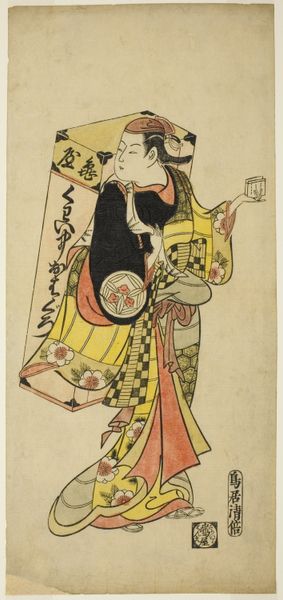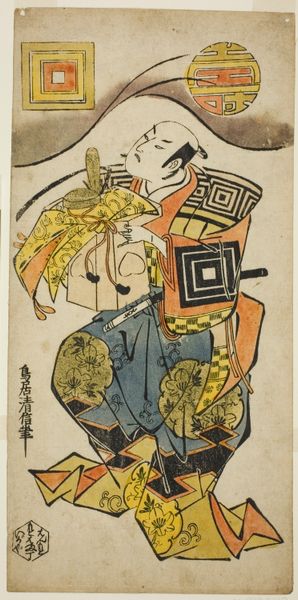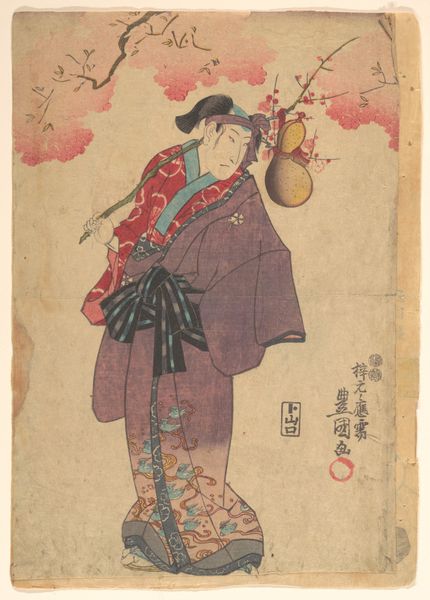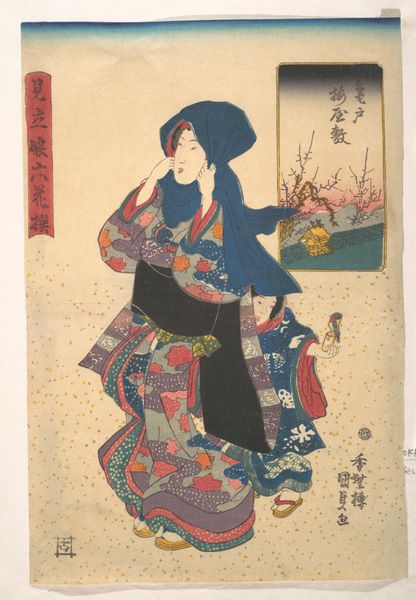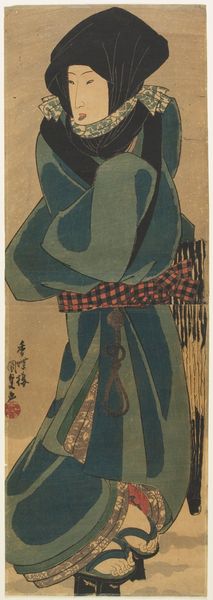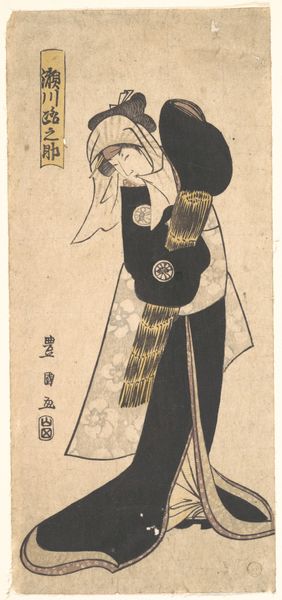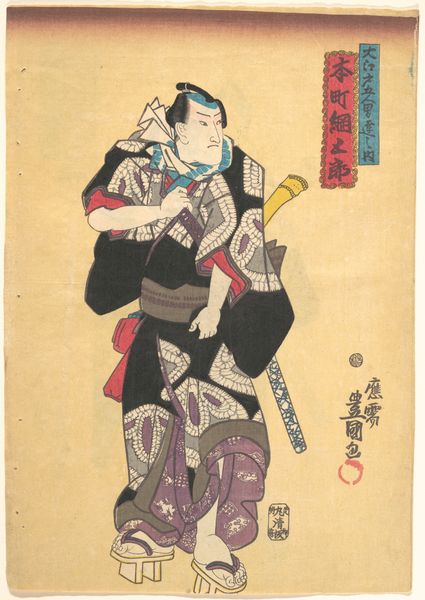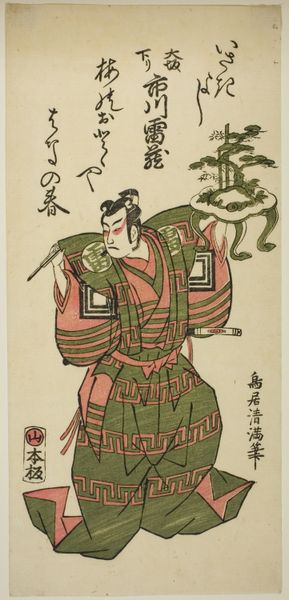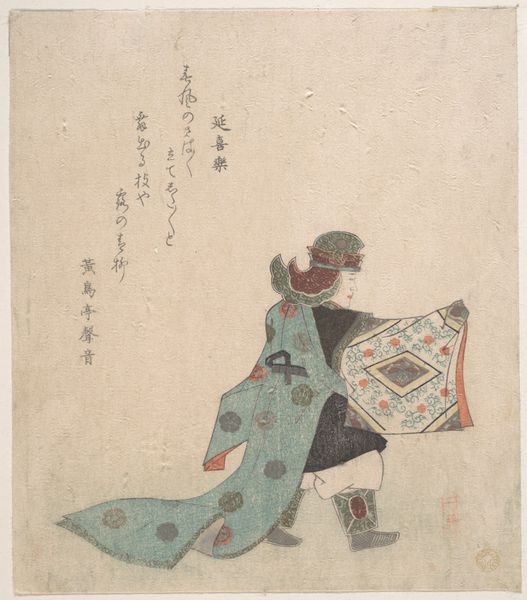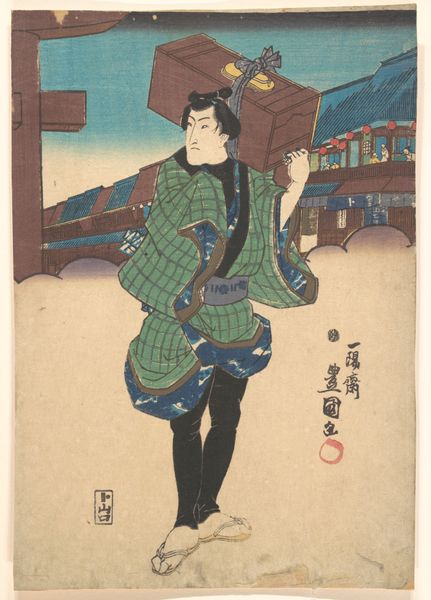
Dimensions: height 190 mm, width 129 mm
Copyright: Rijks Museum: Open Domain
Editor: Here we have Ôta Saburô's "Morning Mist," a 1912 woodcut now at the Rijksmuseum. It looks like an actor in mid-performance, swords at the ready. It's quite stylized, and I'm curious about what underlies the print's design. What's your take on it? Curator: This Ukiyo-e print draws heavily from the material realities of its production. Woodcut prints were a significant industry, democratizing art through a process involving collaborative labor—artist, block carver, and printer. Notice the flatness and strong lines, typical of woodcut techniques? It is a feature and an inherent constraint. Editor: Yes, I see that. The figure's clothing is so detailed in contrast to the flat background and caricature like representation. How does the print’s circulation factor into its meaning? Curator: Ukiyo-e, meaning 'pictures of the floating world', reflects a culture of consumption. These prints weren't just aesthetic objects but commodities within a booming urban culture. Consider the colors, perhaps derived from specific pigments available and their cost? Even the paper itself reflects material conditions. What about the sword imagery? Does the availability of arms contribute to the overall mood? Editor: That's fascinating; so much of the piece is linked to production, not just artistic intent. Thinking about it, that actor, his clothing, even the swords, everything represents not only artistic vision but is indicative of broader material consumption of that era! Thank you. Curator: Indeed! By exploring its materiality and production context, we reveal how economic and social forces shape artistic creation.
Comments
No comments
Be the first to comment and join the conversation on the ultimate creative platform.
